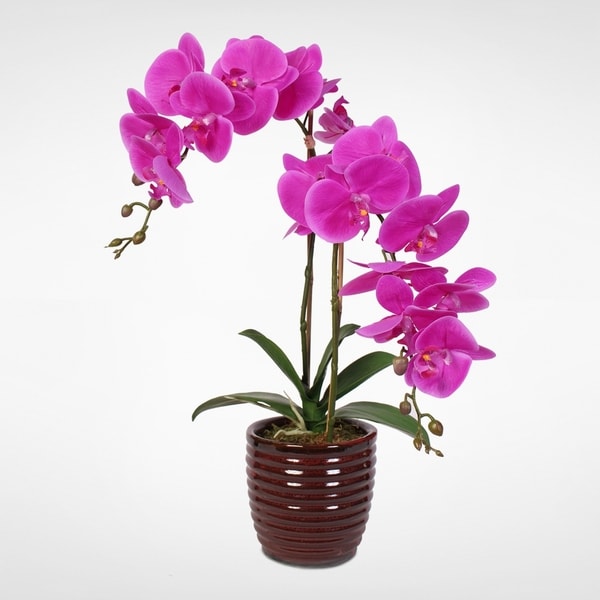Components For Phalaenopsis Orchid Care
Orchids are popular as houseplants because of their flowering and elegance. Phalaenopsis orchids are popular regarding beginning orchid growers since they are easier to care for than almost every other orchids. These orchids are generally native to Southeast Parts of asia, the Philippines and Down under. Phalaenopsis comes in shades of green, lavender, white and yellowish. With the lan hồ điệp trắng, Phalaenopsis can easily flower year after year and provide stunning, stunning flowers as a incentive to its grower. The 3 main components that virtually any orchid needs to thrive which includes Phalaenopsis are water, gentle and fertilizer.

Phalaenopsis, similar to most orchids, need water to live on. The general guideline is to h2o them once every five to fourteen days. You may modify this number depending upon your unique environment. Phalaenopsis is an epiphytic orchid. This means that it is not typically found planted in the surface. Instead, this orchid gows best on living on additional objects such as a tree. Once you water this orchid, the idea likes to have its root base dry almost completely ahead of the next watering. Typically, a lot of people pot Phalaenopsis in a sound off type of medium. Fir or maybe Pine bark are usually applied. The bark can hold humidity and nutrients until the herb is ready to accept them. Look at the bark for dry skin when preparing to water often the orchid again. Sometimes peat moss moss is used in the weed. The peat moss furthermore holds moisture, so you could possibly water less often. When you water your orchids, permit the excess water to empty. Allowing it to stay in the pot may cause root rot. Root corrosion can cause your orchid to be able to wilt and die.
Phalaenopsis needs light to convert foods into energy and to full bloom. This orchid favors some sort of cooler natural light. Placing this specific orchid in an easterly confronting window is the preferred way. Here, it can enjoy a chiller morning sunlight and a chillier light in the evening. Midday sunshine may be too hot. Proceed your Phalaenopsis to a different windows during the hottest part of the moment to prevent leaf burn. Subsequently move it back to the actual easterly window for the next morning. You may also use blinds as well as shades to soften the sunshine during the hottest hours during the day. If the cooler natural light is just not readily available, you can also use unnatural light. Fluorescent light is a highly prevalent choice. Set this light source on a timer and a plan so that the maximum exposure would not exceed twelve hours. A dozen hours is about the maximum amount of sunshine for both natural in addition to artificial for Phalaenopsis. Typically the artificial light should be put about a foot above the grow.
Fertilize Phalaenopsis about when every two weeks. This is the standard for feeding it. Generally speaking, just before the blooming time you may want to feed it on a more regular schedule until the blooms have fallen about; then stop giving. This orchid favors a new temperature of around 62 to 80 degrees Temperature. Just before blooming, allow the orchid to be exposed to cooler conditions at night for a week or maybe more. The coolness exposure is likely to bring about a better bloom coming from Phalaenopsis. Increase the cooler temperature based upon how well your own personal orchids are blooming. In the event the blooms do not seem to be presently there, increase the exposure to the much cooler temperatures at night. Phalaenopsis really should have better blooms. Water your personal orchid first before fertilizing. In that case apply a diluted option of fertilizer. The solution must contain about 1/3 the particular recommended manufacturer's dosage. Typically, you should stop feeding the item completely after the blooming year is over. The type of fertilizer to utilize is balanced fertilizer. Fertilizer has a label that contains about three numbers and dashes among. 20-20-20 or 16-16-16 usually are balanced fertilizers. They each have got equal amounts of nitrogen, phosphorous and potash. 20-20-20 implies 20% nitrogen, 20% phosphorous and 20% potash. Often the nitrogen helps foliage progress and general health; the phosphorous encourages bloom development as well as good root growth; and potash helps resists diseases and also contributes to overall good health.
